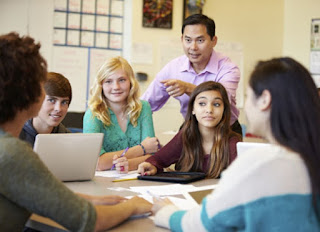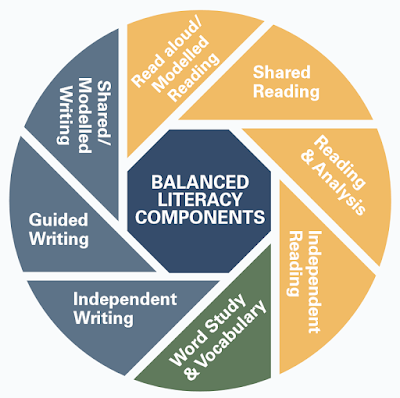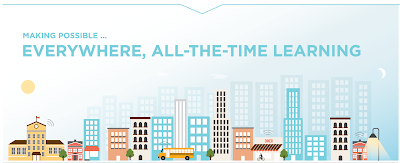The increasing demand for creative individuals in the labor market requires well-prepared professionals capable of enhancing competitiveness through new ideas and innovative actions. From that point, I believe that educators should implement teaching and learning approaches that foster creativity and enhance thinking in order to get an effective learner and thinker to be able to engage with and adapt to the changing world we live in.
From my observation of many classes for my colleagues, I see the most effective teaching that makes good use of creative approaches and help the young people develop their own creative abilities where teachers guide but do not over-direct students. The ability to communicate their ideas, their thinking clearly and respectfully is something that will benefit students in all area of their life and something a lot of people grow up never learning how to do well.
As I have begun my journey in TEACH-NOW program, I have entered with high hopes. I have had all the potential to become a teacher and make a difference in students’ learning in various aspects. When I was a high school/middle school student; I remember myself being in the classroom of twenty to twenty-five students where the teacher told us that no laptops, no cell phones or any other devices are allowed. We should listen, take notes with pen or pencil and of course a notebook! We were able to use computers during the computer lessons. It was difficult to participate or having discussions in the classroom, as students we emphasized on passing tests not encouraged to understand techniques or skills of how to find the information or the answer. I remember when I asked my friends after we had graduated from high school what they learned during that period, they had difficulty to recall specifics. This explained the traditional teaching and learning method which has been considered as the best way of teaching for many years in my school that time!
Adapting a team model to a classroom environment, working collaboratively and interacting with others are essential skills that all secondary level students need to learn and demonstrate and every teacher needs to provide them with opportunities to develop essential collaborative thinking and learning skills. As a teacher, I do believe that developing understanding would occur within the constant interplay between the group and the individual.
I have always been interested in what is called Flipped classroom as an active, student-centered approach that was formed to increase the quality of period within class through creating time for varied instructional techniques, including active learning and higher order thinking, along with increased student-to-teacher interaction and creativity. In my research I would discuss what flipped classroom approach is, flipped classroom technology models, looking at the learning through a student-centered inquiry process that initiates scaffolding of the learning by the teacher and peer group where the key aim of the learning approach is for students to take more responsibility for their learning as Robinson said working in groups or teams will facilitate a creative and engaging learning environment. He thinks this will work to personalize education, sparking a paradigm shift away from the current model.
I believe that this flipped learning is a pedagogical approach in which direct instruction moves from the group learning space to the individual learning space, and the resulting group space is transformed into a dynamic, interactive learning environment where teacher guides students as they apply concepts and engage creatively in the subject matter. Throughout my research, I would address the requirements of serious commitment and understanding by the teacher and quality engagement by the students themselves to promote creativity in the classroom environment. Defining the creativity, addressing the importance of creativity in the classroom, I would also discuss the ways in which flipped classroom model benefits students' learning mentioning the key points for better understanding the implementation of creativity and thinking in classrooms. Identifying the characteristics of teachers who are considered creative educators, as well as specific instructional strategies that would be incorporated in the flipped class to develop the skills of high-level thinking and creativity.
I will be looking at the flipped model as a way to teach students how to learn and ways of thinking, engaging them through collaboration which can motivate creativity in different ways. Finding practical ways in the flipped classroom approach that teachers can be used to encourage creative performance and thinking in groups of students which is essential because we can not work with students one-on-one all of the time. It is worth to give students the chance to work collaboratively and to make the process of collaboration more creative, as well as the tools and the use of technology that teachers would provide through this model to enable creativity so students can choose to do some digging into a subject.
While working on my research I would discuss the following and while I am doing my research I would add to this accordingly :
- What do we know about the curriculum and flipped learning in promoting creativity in the classroom? As teachers, it is important to be aware of the wide range of backgrounds, experiences, and perspectives of our students. This awareness needs to be translated into the curriculum, pedagogy and all aspects of teaching to ensure the creativity with the flipped learning.
- What contributes to the development of creative educators (specific training for 21st-century teachers)? The skills of teachers in designing this model, the materials, types of equipment, learning managements systems that would be used in the flipped classroom.
- The chronological perspective to examine the pedagogical practice of flipping a class, reminding s that this practice existed many years before it was named.
- The effective use of flipping class to enhance creativity and thinking, some structure routines, probing questions, and documentation we can make students’ thinking more visible toward foster better thinking and learning. I would look at the classroom layout/design, the learning environment that would promote collaboration, and help in establishing a connection between students’ real lives and classroom.
- Addressing the reflective activities in the flipped model in which students think about what they learned, how it will help them, its relevance, and more. Reflection would be a regular part of flipped learning to be effective and promote creativity as students need metacognition to connect content to objectives.
Working as a shadow teacher in high school would help me to include an observation of teachers complete classroom session and a post a class discussion mentioning the actual classroom practices that would be observed and notes would be recorded in order to provide a holistic understanding of their flipping class practices.
In the end, as I have mentioned before, demographic information about the teacher’s age, years of teaching experience, educational preparation, and specific training related to 21st-century skills would be collected. In addition to the classrooms observations, the documents that would be used in the class, such as class objectives, PowerPoint presentations, and the use of any other technological equipment that are suitable for flipped learning condition such as (PDFs, recorded sounds, websites) or any lecture videos from the internet sites such as Khan Academy, YouTube or Ted Talks that would be collected and reviewed as a data source to supplement my observation describing the collaboration and communication strategies and the classroom environment have been used, looking at what flipped learning system, pedagogical delivery style, and technology has been used and including reflections to supplement my observation data.






